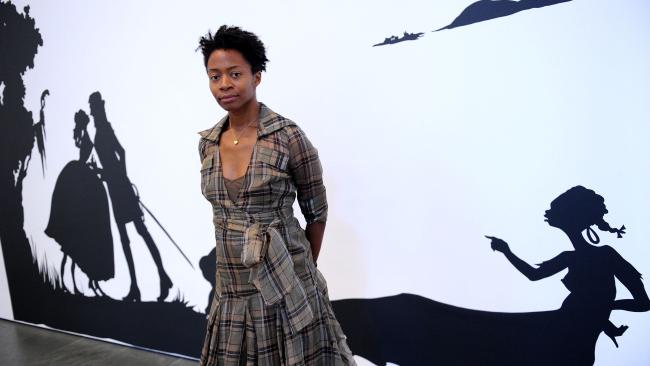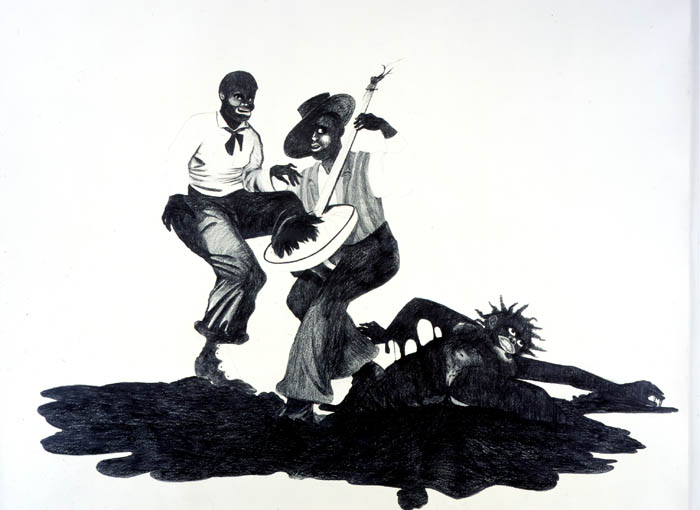Kara Walker (American, b. 1969) is best known for her room-size tableaux of black cut-paper silhouettes that examine the underbelly of America’s racial and gender tensions. Her works often address such highly charged themes as power, repression, history, race, and sexuality. Born in Stockton, California, Walker moved to the South at age 13 when her father, artist Larry Walker, accepted a position at
Georgia State University and her family relocated to Stone Mountain, a suburb of Atlanta. Focusing on painting and printmaking in college, she received her BFA from the Atlanta College of Art in 1991 and her MFA from the Rhode Island School of Design in 1994. Walker was included in the 1997 Biennial exhibition at the Whitney Museum of American Art, New York. Later that year, at the age of 27, she became the youngest recipient of the prestigious John D. and Catherine T. MacArthur Foundation’s “genius” grant, which launched a public controversy around her work. In 2002 she was chosen to represent the United States in the São Paulo Biennial in Brazil. Her work has been exhibited nationally and internationally and is included in the collections of major museums worldwide. The 2007 Walker Art Center–organized exhibition Kara Walker: My Complement, My Oppressor, My Enemy, My Love is the artist’s first full-scale U.S. museum survey. Walker currently lives in New York, where she is a professor of visual arts in the MFA program at Columbia University.
“Most pieces have to do with exchanges of power, attempts to steal power away from others.” —Kara Walker 1
Kara Walker’s work is layered with images that reference history, literature, culture, and the darker aspects of human behavior. Connecting all of her work is an examination of power. The characters in her environments display power struggles of all kinds: physical, emotional, personal, racial, sexual, and historical.
Making sense of these images requires careful looking and an understanding of the references the artist makes. To facilitate this process, this section contains information about five of the Walker’s key themes: Representing Race, History: Collusion of Fact and Fiction, Narrative, Desire and Shame, and Humor.
Each topic is described in a brief paragraph with related quotations by the artist, critics, curators and writers; examples of pieces in the exhibition that relate strongly to that theme; and same discussion questions. For different ways to approach the art, visit Types of Responses where you’ll find more general questions.
Use this section as a way to link Walker’s work to your curriculum, a book club discussion, or for a deeper look at the exhibition. For additional readings related to each theme, look for the color-coded tags in the Annotated Resource List.
For a more in-depth look at the subjects in Walker’s work, please download the Gallery Guide (PDF), and Yasmil Raymond’s “Maladies of Power: A Kara Walker Lexicon” (PDF) from the exhibition catalog Kara Walker: My Complement, My Oppressor, My Enemy, My Love available in the Walker Book Shop.


